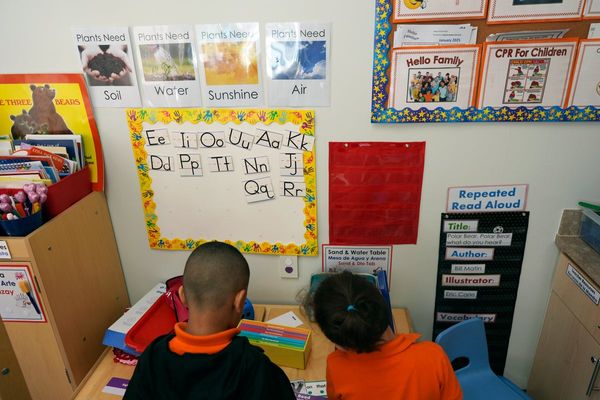
Today, California produces more than 90% of all wine made in the United States. A $43.6 billion dollar industry, it is also the fourth largest wine producer in the world. The beverage is quintessential to the state's self-image as Europe's carefree kid-sister; of America's arrival and clout in the international wine market.
And yet, as land in the state becomes dryer and fires burn hotter, activists across the country are challenging California's glittering self-conception. Despite its status as a luxury good, "wine, at the end of the day, is an agricultural product and needs to be treated as such," says activist and sommelier Jahdé Marley.
Agriculture accounts for more than 70% of all water usage in the state, the vast majority of which is held by billionaire megafarmers with a chokehold on California's "bewilderingly complex" water rights. In Napa and Sonoma — the heart of California's wine industry — investors from South Korea, Australia, and Arkansas have recently paid $250M, $315M, and $180M for vineyards, respectively. Even California governor Gavin Newsom's company, PlumpJack, recently purchased $14.5M vineyard in Napa. (Newsom launched his career by opening a winery in Napa with Gordon Getty, son of oil billionaire J. Paul Getty).
However, the seizure of land by the ultra-powerful to make wine in the state is nothing new. California's winemaking industry began in the 18th century when a vast wave of Spanish priests arrived and constructed Catholic missions — Santa Cruz, San Jose, Santa Barbara — across the state's spine. There, Franciscan priests grew rows of imported pais grapes for sacrament, forcing hundreds of Indigenous tribes from their ancestral lands in the process.
Given this history of colonization, wealth inequality and the ongoing climate crisis, activists say that change in the industry is both imminent and necessary. In California and beyond, a new generation of winemaker-activists is using hybrid and indigenous grapes to create transformational change. The movement, which Jahdé Marley calls Anything But Vinifera, or ABV, "seeks to use wine and ferments as a vehicle to enact land justice, social justice, and food justice — all of which ties back to agriculture."
The 280 Project, located at Alemany Farm in San Francisco, is considered by many to be the heart of the ABV movement. The farm is nestled between the Alemany Apartments — 158 units of much-needed affordable housing in a city with the highest rents in the country— and Interstate 280. Among a sea of grapes, the car horns are a disorienting reminder of the challenges of growing food in a system designed for semi-trucks instead of land stewards. For Christopher Renfro and Jannea Tschirch, though, the interstate is a source of inspiration.
Renfro and Tschirch started the 280 project in 2019. Renfro heard that rows of vines at Alemany had been abandoned and rushed over to be their caretaker. For Renfro, a trained horticulturist and sommelier, it felt like fate. At first, the duo only wanted to experiment. Could they make a great bottle of wine in their apartment? Almost immediately, though, it became clear that their calling was larger.
They started to hear stories about the previous winemaker harassing Black residents who entered the farm, despite Alemany's public status. Renfro, who is Black, and Tschirch, who is white, wanted to create a radically different space. In addition to winemaking grapes, they started to plant grapes for snacking. Neighbors came and ate them fresh from the vine. After several similar, small gestures, a vision emerged. The 280 Project could train people who had long been excluded from the industry — Black, Indigenous, trans and queer — to make wine, feed their community and build sustainable livelihoods in the process.
In 2020, in collaboration with the winemaker Steve Matthiasson, that vision materialized into a full-blown apprenticeship program. Each year, five students have the opportunity to learn about all aspects of winemaking, from climate-adaptive farming techniques to the benefits of hybrid grapes. When the first application opened, spots filled up in less than five minutes.
Like Renfro and Tschirch, Jahdé Marley launched Anything But Vinifera after noticing severe underrepresentation of people of color in the wine industry — and an accompanying refusal by wine industry leaders to acknowledge wine's contribution to climate change. Originally envisioned as a one-day symposium, Anything But Vinifera quickly transformed into a hub to enact change in the industry as a whole.
The name Anything But Vinifera refers to hybrid grapes, fruit wines and native grapes. "Anything but" the Vitis vinifera — Cabernet Sauvignon, Pais and Chardonnay — found on "classic" wine lists across the country. It is an explicit refusal to continue with the status quo.
Hybrids are the result of two, cross-bred grapes, usually Vitis vinifera and another native grape. They often require less water (or no water at all, which is a boon in drought-prone California) and can grow in more diverse climates than their Vitis vinifera counterparts. Despite their recent popularity, wines made from fruits and native grapes have existed for millenia. "The belief that only Vitis viniferacould be called wine is the result of colonialism" which created a singular, exclusive definition of wine, says Marley. Recent evidence suggests that the first wines were made with indigenous grapes more than 9,000 years ago at Jiahu in Neolithic China
"The original wine was a botanical co-ferment," says Marley, referring to the fact that combining grapes with other fruits, herbs and spices is nothing new. Despite this history, indigenous grapes, co-ferments and hybrids have been deeply stigmatized in European winemaking.
The first hybrid grapes were planted in the 19th century, when a small pest called phylloxera decimated the European wine industry. By the 1880s, the phylloxera rampage cut France's vibrant and essential industry in half, causing the price of wine to skyrocket. But scientists struggled to determine how the phylloxera had arrived in Europe — and if they could stop it.
A clue came when a collection of imported American vines, most likely Vitis labrusca, were able to survive the attack. For winemakers across France, it became clear: phylloxera had been imported from America. But how?
For Marley, the timing offers a key clue. "When we look at what was happening in the early to mid-1800s, these are the same ships that are carrying enslaved Africans," she says, pointing to the fact that slavery had not yet been abolished in the United States. At the same time, there was an extensive trade network carrying tobacco and cotton — all of which had been grown using the forced labor of enslaved Africans — between the two countries. This means the pest could have attached itself to one of these products, or even to ships. Even if the exact transport of the pest has not been agreed upon, for Marley and others in the ABV movement, this is evidence of wine's extensive colonial roots.
Once scientists realized that the American vines were resistant to the pest, they used grafting to combine the Vitis vinifera scions — pinot noir, cabernet sauvignon, champagne — with the American, phylloxera-resistant rootstock. In a rush to outpace the phylloxera, almost every vineyard in France was replanted with these vines: the world's very first hybrids.
And yet, almost as soon as the scientists resolved the crisis, hybrids became demonized. France banned them in the 1930s, calling them "inferior" to "pure" Vitis vinifera varietals. "Once their grapes were saved, people started to turn their nose up because they didn't need them anymore," said Marley. This stigmatization of hybrids has enabled conventional winemakers to maintain a stronghold in the industry, as it is almost impossible to grow Vitis vinifera grapes outside of the "traditional" — and extremely expensive — winemaking regions of Western Europe and Northern California.
The flexibility and resiliency of these grapes has opened the door to make wine in New England, the South and the Midwest. This has enabled a new generation of winemakers — the vast majority of whom are women, people of color and queer — to access land and create their own equity-centered projects, like the 280's apprenticeship program.
"It became very clear that the way our producer friends were going to be able to access their own land and have their own wine labels were very much in the fruit wine, hybrid wine, and native grapes sectors," Marley said, adding that "the price of land outside the major regions is much lower, and the knowledge is shared in a more communal way." Across the country, these winemakers are using hybrids to create a quintessentially new form of American wine—and decolonizing the Euro-centric industry in the process. These methods are also inextricably bound to climate change, as hybrids require significantly less tilling and agricultural inputs than their Vitis vinifera counterparts.
Kathline Chery, Justine Belle Lambright and Grace Meyer founded Kalchē Wine Cooperative, in Fletcher, Vermont, in 2020. All industry professionals who had been laid off, they used the time (and stimulus checks) of early quarantine to reimagine what the beverage industry could be. Was it possible to grow wine that tasted delicious and healed the land on which they worked?
The answer was a resounding yes. Kalchē has embraced a broad understanding of wine and ferments, utilizing hybrid grapes and foraged fruit. Their ecological footprint is significantly lower than many of their California counterparts, because they rely on existing crops for winemaking instead of planting new vines, tilling more soil and using the vast quantities of water needed to establish a new vineyard. Their wines are also more unique. A recent glass had the bright vibrancy of a perfect summer red, balanced with a delightful dose of cranberries. Kalchē's wines are not only delicious. They are a template for transformation.
According to Lambright, Kalchē's Director of External Business, Kalchē's vision toward climate justice is inextricably bound to the dismantling of "racism, sexism and colonialism" in wine. They point out that there can't really be a full decolonization of European wine, because it's steeped in a legacy of Indigenous land theft, enslavement and economic exclusion. There can, however, be a reclamation of the "pancultural" origins of wine, from the botanical co-ferments of ancient times to Kalchē's cranberry and hybrid blends today.
"People are hopeful when they can touch the thing. When something seems so far away, it feels hopeless," says Marley. Nearness — feeling your hands in the soil and viscerally understanding that a different world is possible — is necessary for change.
At The 280 Project, every glass of wine is infused with such possibilities. As the scholars Eve Tuck and K. Wayne Yang write, "decolonization is not a metaphor." It is a practical strategy to change the wine industry — and the world. "If billionaires can break off a piece of their agricultural properties, maybe we can build cooperative farms, community gardens — and we can keep money in that community," says Renfro. "Billionaires like Bill Gates are buying up all of this land in California and I want to talk. I want to see what we can do."
As with other agricultural products, the footprint of wine includes not just what is grown, but how it's grown and by whom. As climate change disrupts our ability to do things within the status quo, these producers are demonstrating that we have an opportunity to challenge everything and create something life-giving in its place. Between an apartment complex and a freeway in California, where pockets are brimming with ripe grapes, a new reality takes root.







